Inside the war India doesn’t want the world to see
From bombings to beheadings, ethnic violence has engulfed Manipur for the last two months. Facing an internet blackout and little word from prime minister Narendra Modi on the crisis, Namita Singh reports from a state that has been pushed to the brink of civil war

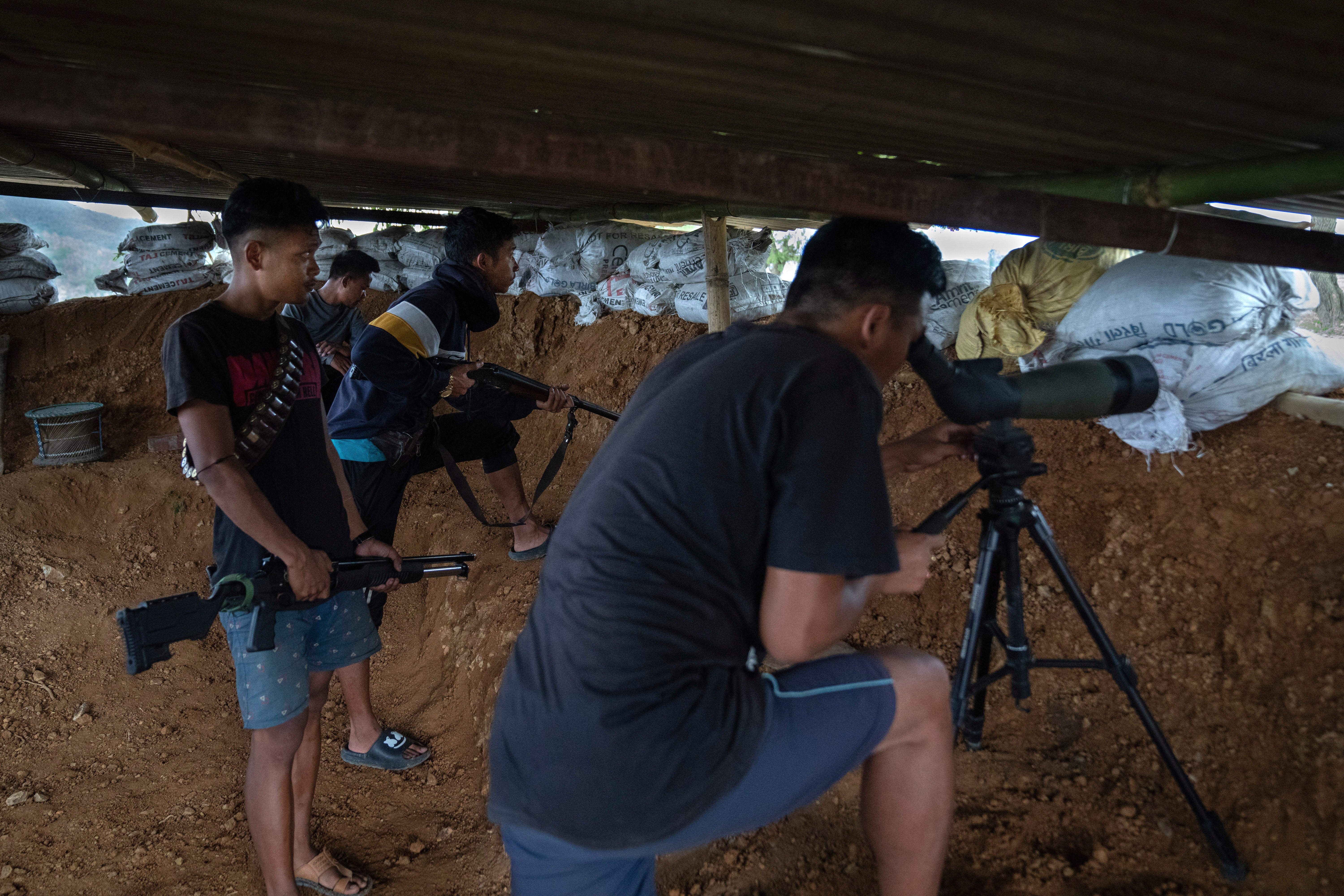
We are on the way back to Manipur’s state capital Imphal when a large group of men armed with lengths of pipe and bricks emerges, blockading the road. The crowd does not let us go until they are convinced we are not their enemy – in this case, the mostly Kuki tribal community who have lived in harmony alongside the majority Meitei people for decades until the sudden explosion of ethnic violence here two and a half months ago.
In a matter of days, this state in the northeastern corner of India – more than 1,500 miles from Delhi, and only about 70 miles from the border with Myanmar – was divided into territories controlled by either side, with men from each community taking up arms to form private militias and setting up checkpoints along major roads complete with trenches, bunkers and armed patrols.
At least 142 people have died so far in the fighting, according to official figures, with the true number likely far higher. Fires have been the backdrop – with houses and places of worship set ablaze. It has been difficult to verify the true scale of the situation, in part because the Indian government has restricted foreign media from travelling to the region, and in part because of an internet blackout that has restricted the flow of information in the state.
The government has deployed around 10,000 additional soldiers from the Indian Army and the paramilitary Assam Rifles to try and restore order, but they have been unable to prevent the displacement of more than 40,000 people who are now living in nearly 350 relief camps. Some of the horrors that The Independent has been told about during the violence include:
- The burning – and in at least one case beheading – of some of those fighting
- Families telling of the belief their sons have been tortured rather than dying during gunfights
- Villages stockpiling weapons to protect their homes from attack
The lack of internet explains why it took two months for a harrowing video of two Kuki women being paraded naked through the streets to emerge and provoke national outrage from across the political spectrum, forcing prime minister Narendra Modi to break his silence on the crisis unfolding in a state controlled by his Bharatiya Janata Party (BJP) less than a year before an expected general election. Opposition parties have now forced a no-confidence vote in parliament. The BJP have a clear majority, so the motion will fall – but the aim is to ensure a debate about the violence in Manipur.
The clashes first began after members of a number of hill tribes including the Kuki, who enjoy protected status as minorities, protested against plans to extend that status to the Meitei community, who represent around 53 per cent of Manipur’s population. Doing so would have given Meitei access to the same benefits and quotas in government jobs and education as the minority tribes.
Demonstrations by the Kukis led to clashes in the village of Churachandpur, some 40 miles (63km) from Imphal, at the beginning of May, before spreading out across the state in a wave of violence that has shocked the nation.
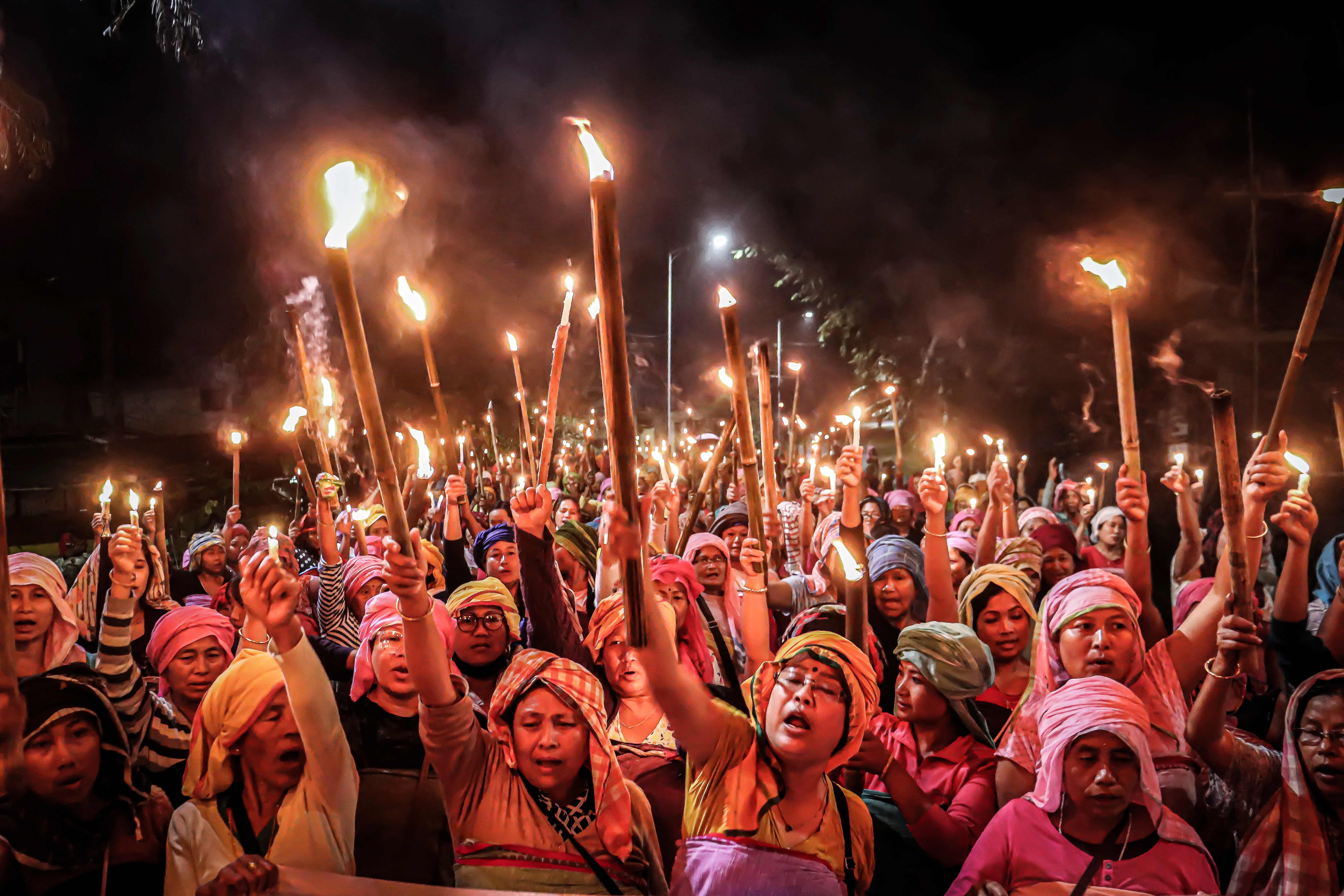
Haobijam Somenkumar, a 24-year-old Meitei man, sought his mother’s permission to go to the newly formed “frontline” to fight against the Kukis. He made the decision after hearing that his sister’s home was in one of the villages worst hit by the violence.
His mother, 42-year-old Haobijam Ombi Ichatombi, says he came to her saying: “Kukis are attacking the village. I want to go.” She gave him her blessing. “Someone needs to protect the motherland, after all,” she tells The Independent.
That was the last time she saw him alive. Somenkumar traveled to the village of Khamenlok, where on 13 June he and nine other Meiteis were killed following a gun battle with some Kuki fighters.
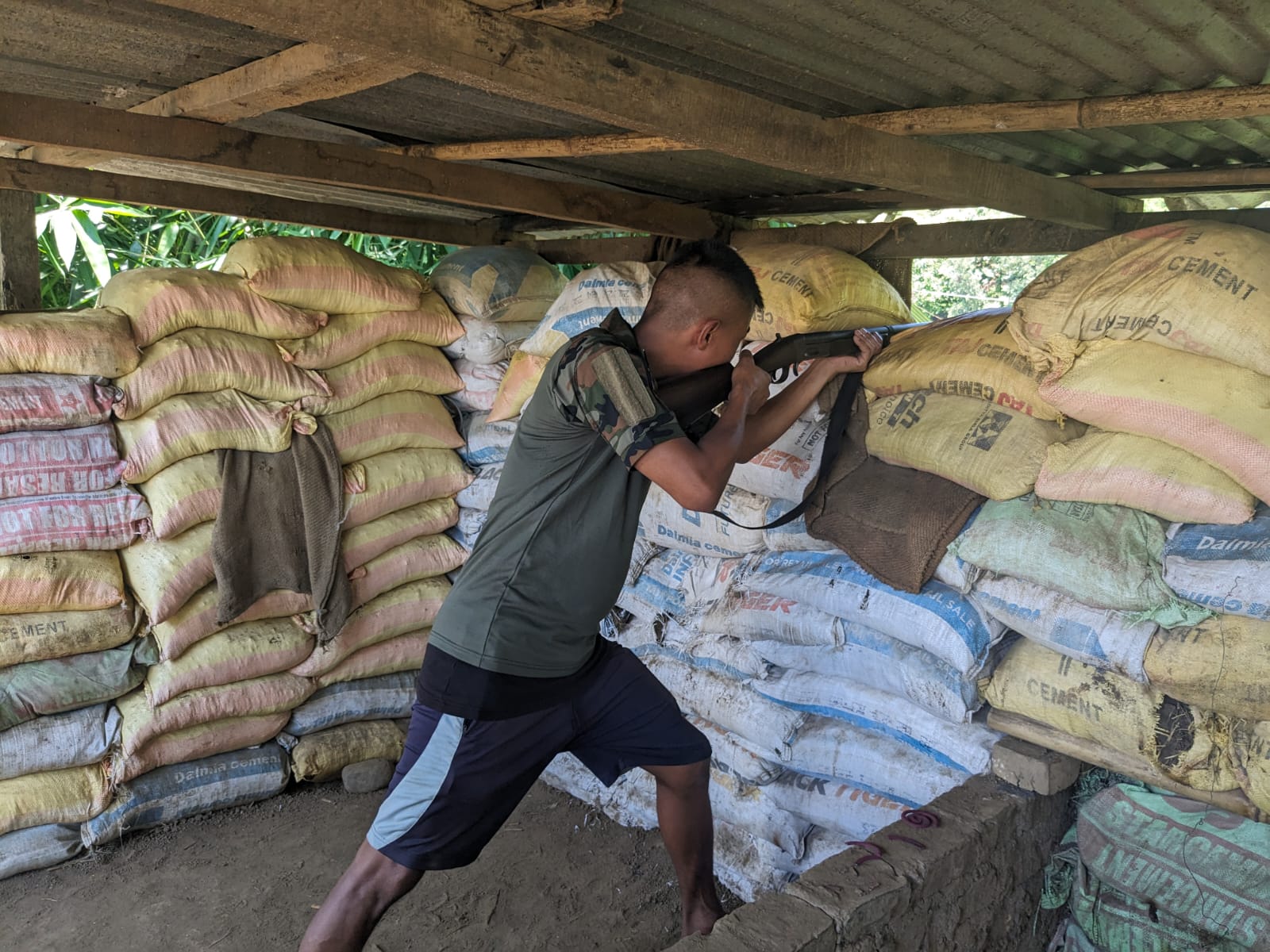
“He had asked us to meet him with additional supplies like food and water, as they were running out of it,” his younger brother Haobijam Surajkumar recalls of that night. “My mother and I went together to drop off the supplies and bring him back because we were worried, as the shelling there had intensified.
“But when we reached there, we just could not contact him on the phone. There were bomb attacks on the village border, as we waited on the other side. Soon, the first victim who got hurt was taken by ambulance.”
The family say they looked for Somenkumar from 9pm until about 3am in the morning. “I checked the morgue, contacted the hospital, but no one could confirm whether he was dead or alive,” says Surajkumar.
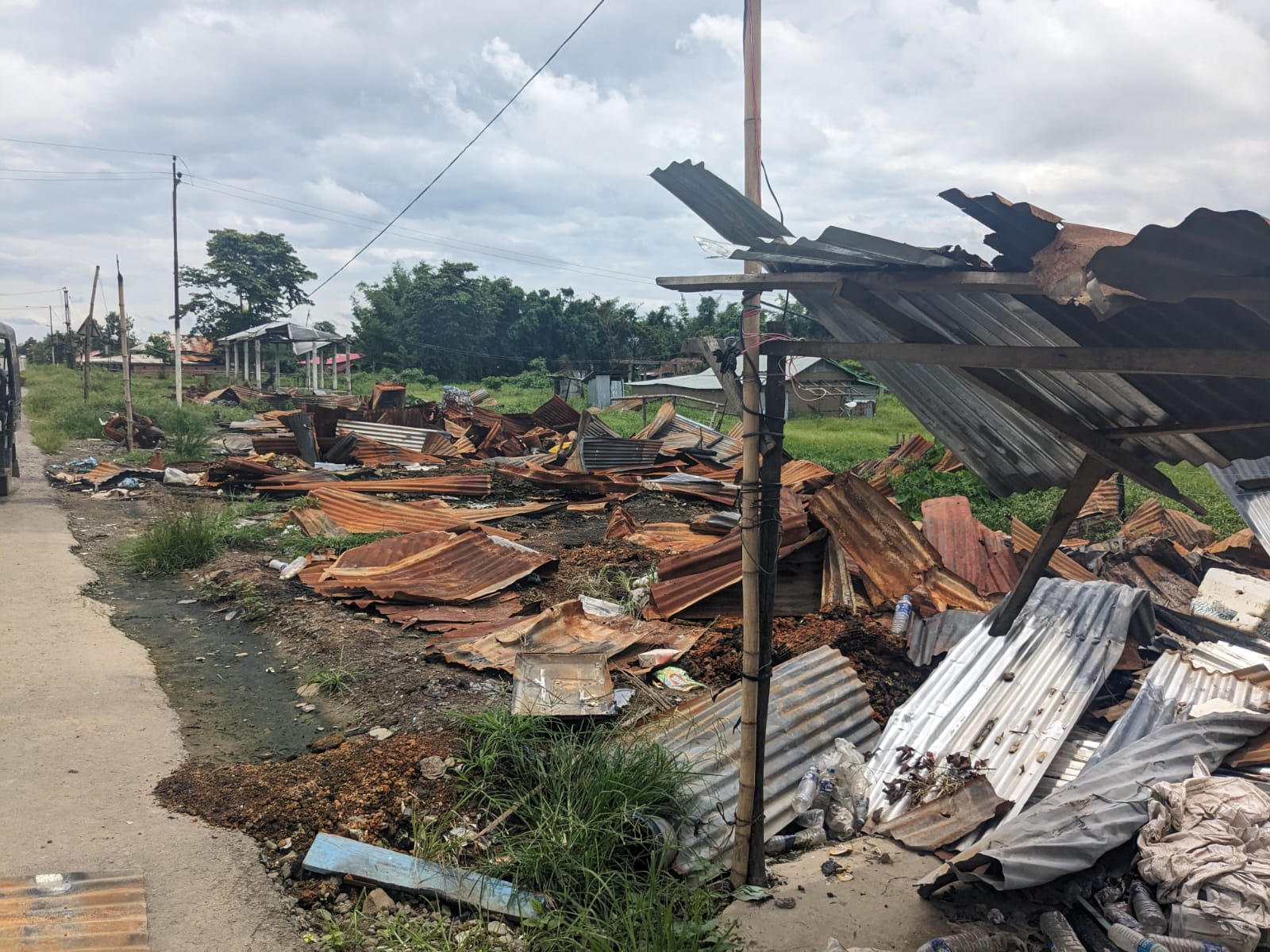
Their mother waited inside Khamenlok, hoping to be there when Somenkumar returned. “All of a sudden, a phone call came from my son’s number. When I picked it up, someone on the other end asked, ‘Hey! This is your son’s phone?’”
Shocked, she asked for the whereabouts of her elder son. “The Kuki militant replied saying: ‘We have sent him up [to God]’,” Ombi Ichatombi recalls, wiping her tears. “I begged them to not kill him. But they said ‘No, no, no, we have done that [already]’,” said his mother, adding that she believes he did not die of a bullet shot wound but from torture.
Ombi Ichatombi was not the only one who got a call from Somenkumar’s killers that night. His wife, who had stayed back in Imphal, also received a similar call.
“They asked me if I was the wife or the mother. ‘I am his wife’,” the 26-year-old says she responded, as she held their five-year-old son in her lap. “When I started begging them to spare him, they said, ‘Don’t worry, we are here to take care of you’.”
Opposition parties have called on the government to restore peace to Manipur before the state is irrevocably split, with some Kuki leaders demanding the carving out of a separate state to house their people safely, saying that Kukis are being “hounded” out of the Imphal Valley with Meiteis “burning down their colonies, settlements and churches”.
Home minister Amit Shah, one of Modi’s most trusted aides, visited Manipur in late May to review the security situation but has not done so again since. Amid criticism that India ranks second in the world for internet access shutdowns, broadband connections were restored this week – but mobile data remains severed.
Even travelling short distances in Manipur is now a challenge, with control of villages and towns split between the two groups and each side having its own borders, separated by buffer zones. The roads joining the hills and the Imphal Valley are dotted with regular barricades and checkposts belonging to armed militias on either side, as well as those operated by the security forces and state police struggling to contain the situation.
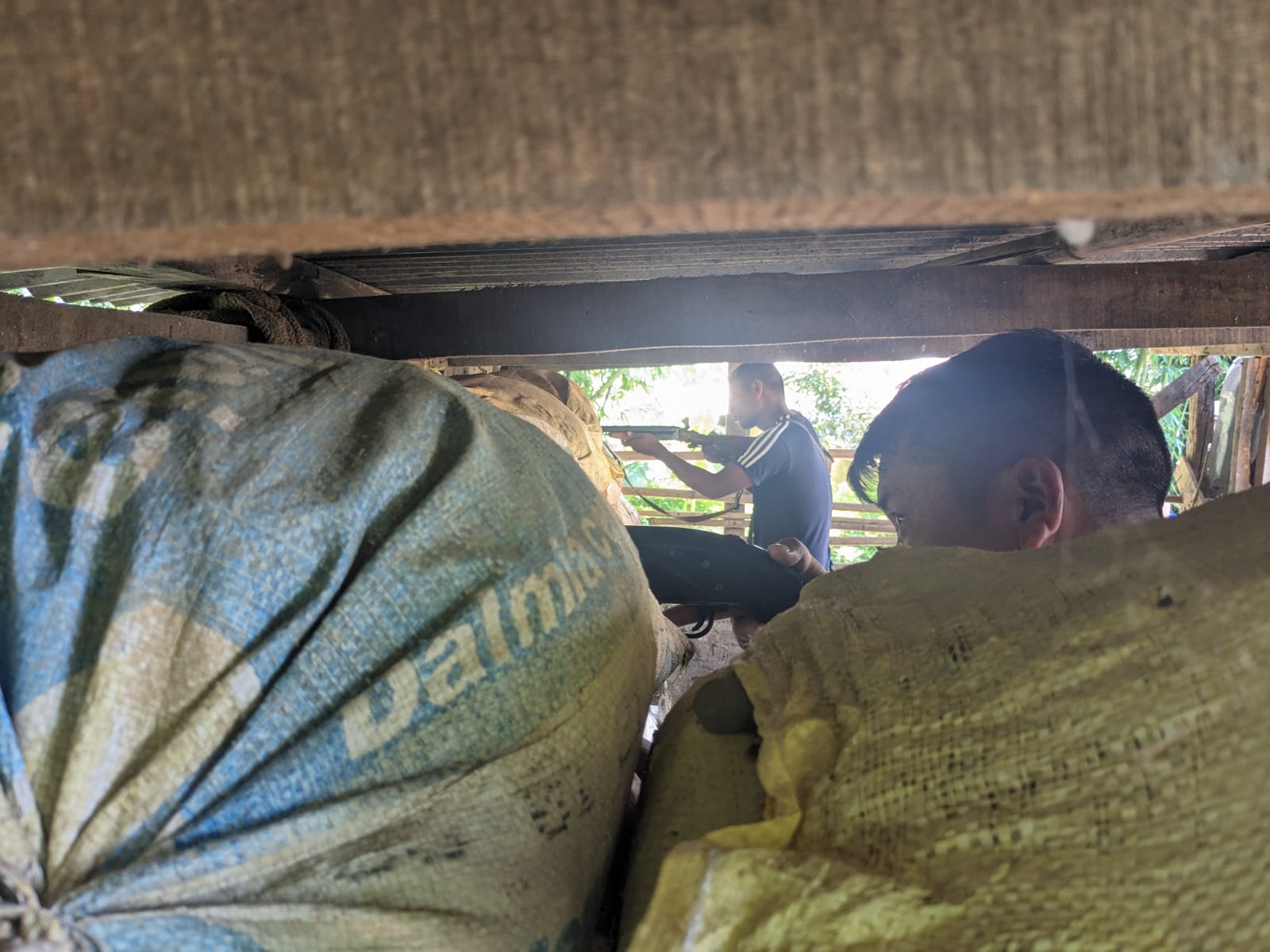
On the way from Meitei-dominated Imphal via Bishnupur to Kuki-majority Churachandpur, located just 63km from the capital, there are multiple such barricades, built up of barbed wire, large construction pipes and mounds of caked mud. The road is lined with charred vehicles, rubble and the burnt-out remains of homes, reminders of how quickly and how far this conflict has spread.
Villagers armed with rifles and double-barrelled shotguns stand ready at the so-called border of Churachandpur town, where this crisis began, watching each vehicle approach from behind their sandbag bunkers.
The civilians “on duty” demand to check documents and ask questions about the identity and background of each visitor, as well as the purpose of their visit before they allow them to enter “their territory”. While outsiders are generally not threatened, members of the Kuki or Meitei communities cannot cross over into an area controlled by the other side – and know they risk their lives if they try.
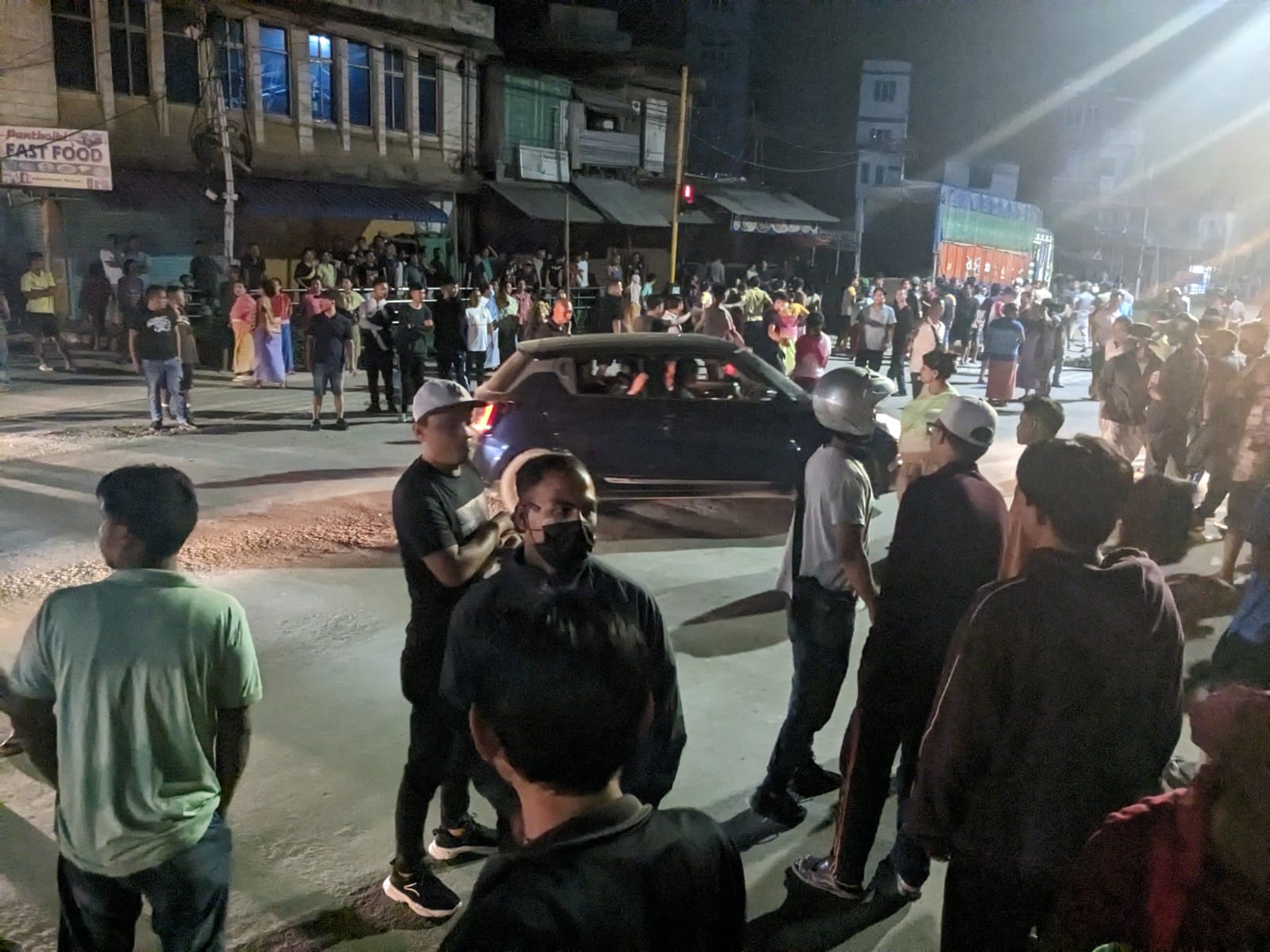
Even the armed forces cannot move freely. The incident that ended with us being pinned down on the way back to Imphal started with an Indian Army truck being held up by a group of thousands of Meiteis at Nambol in Bishnupur, after the locals spotted two women being carried inside dressed up in camouflage.
The Meiteis believed the army was trying to provide safe passage to two Kuki women through their territory, and the incident led to a stand-off lasting for hours as the number of angry protesters swelled. Eventually, reinforcements were called in by the army and teargas was used to evacuate the truck.
“The army dressed up the Kuki ladies in full camouflage dress and they were carrying them for their safety but why did they dress them up in camouflage?” asked L Priyo Kumar Singh, who was among the Meitei men gathered at the spot blockading the road directly connecting Imphal and Churachandpur.
“What is the main reason? We want to identify who are they. And when we asked them to show their identity card, they could not produce [it].”
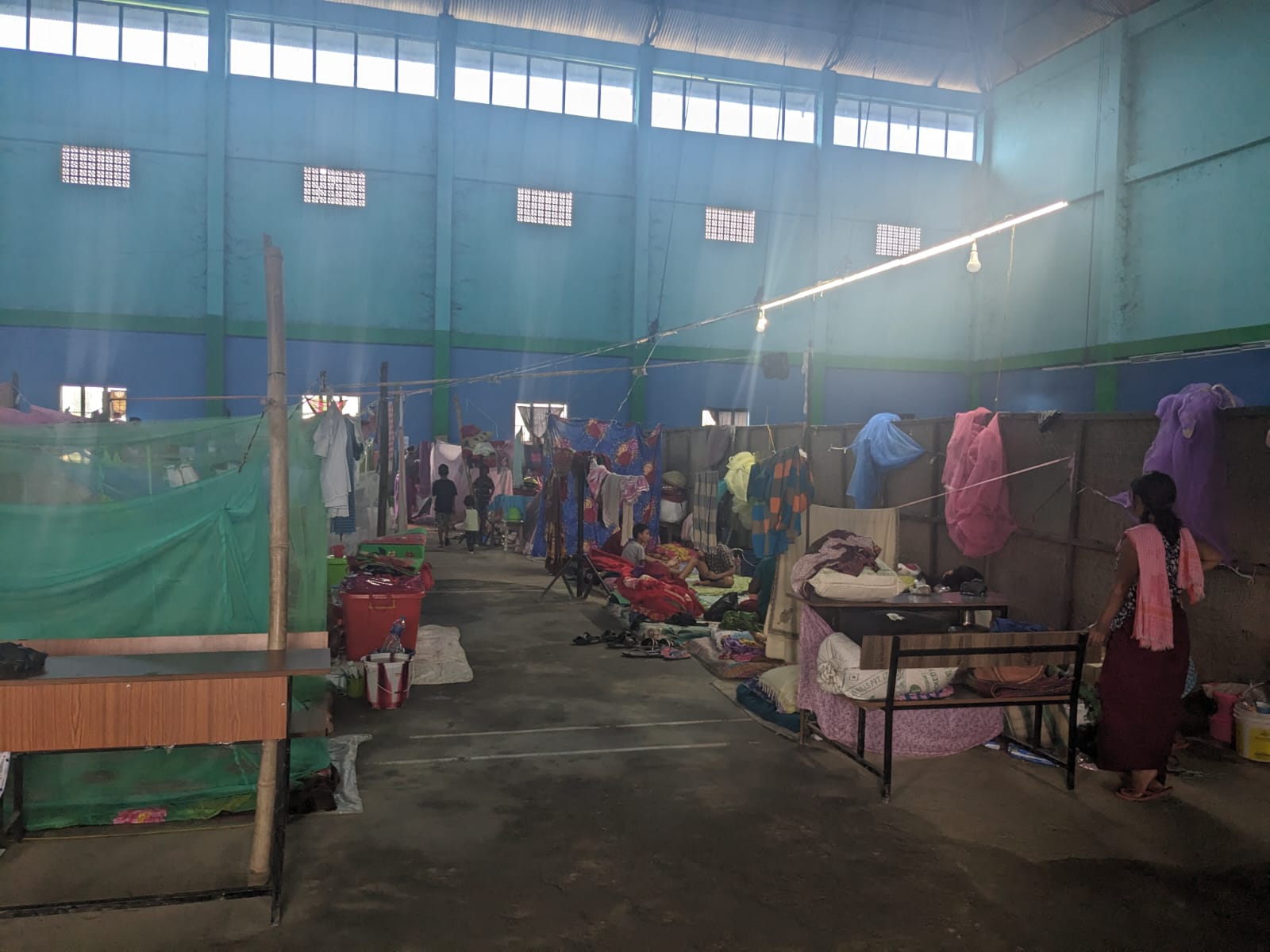
The Independent reached out to the Imphal police in the wake of the incident, asking whether action would be taken against anyone suspected of preventing members of the security forces from discharging their duty. We were told that police officials had been directed not to discuss specific incidents with the media. “We take down complaints into all such incidents,” said a senior official, refusing to provide any more information.
A lack of confidence in the security forces to maintain the peace is partly what prompted Somenkumar to head to Khamenlok, claims his family, and is one of the reasons civilians on both sides say they are taking up arms – to protect themselves.
Like Somenkumar, David Theik went to his Kuki-dominated hometown of Langza to “protect” the border amid reports of arson attacks from Meiteis.
On the night of 1 July, Theik and a number of other Kukis with him received word that a large group of Meiteis were coming. “David was stuck there that night and could not escape,” says his 31-year-old brother Abraham Theik. David Theik decided to stay put and leave in the morning, fearing the risk of being caught in friendly fire if he tried to move out of the village during the night. It’s a decision that cost him his life.
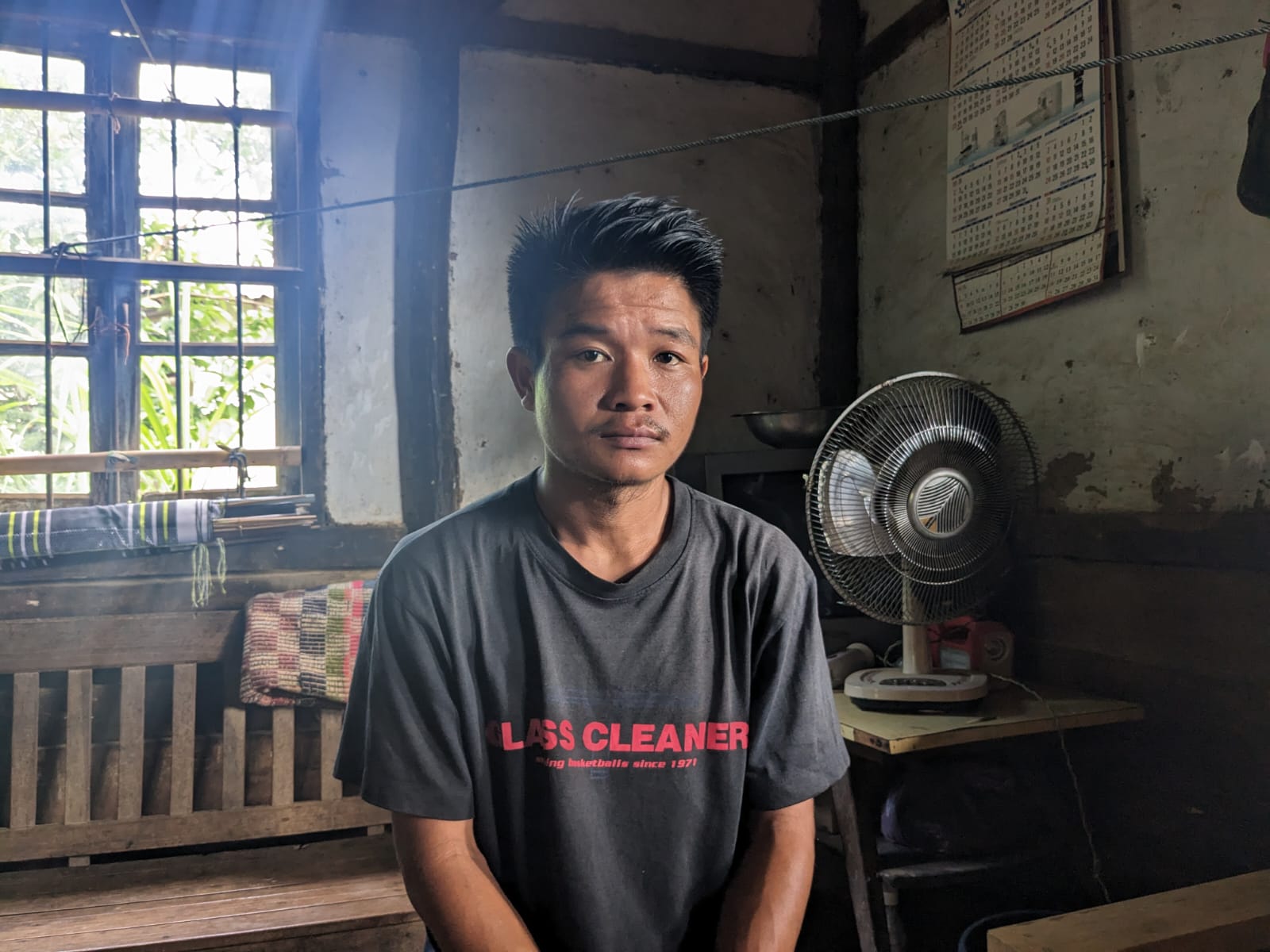
The family last received a call from him at 4.47am in the morning, when he informed them about the impending Meitei attack. After that, Abraham was unable to reach him, he tells The Independent.
The next morning, Abraham received calls from his neighbours who claimed to have witnessed David’s beheading. Subsequently, a video of his beheading was shared with Abraham, confirming his worst fears. “No one knows how he was captured. My neighbours in the village called us and said, it was David.”
The family went to the village to retrieve his body, but all they found when they got there were his charred remains. “They had burnt the body and the head. All that was left was his burnt bones. I never thought something like this would ever happen. It would have been okay if they had just killed him by shooting him, but torturing... I feel really hurt and we can do nothing about it.”
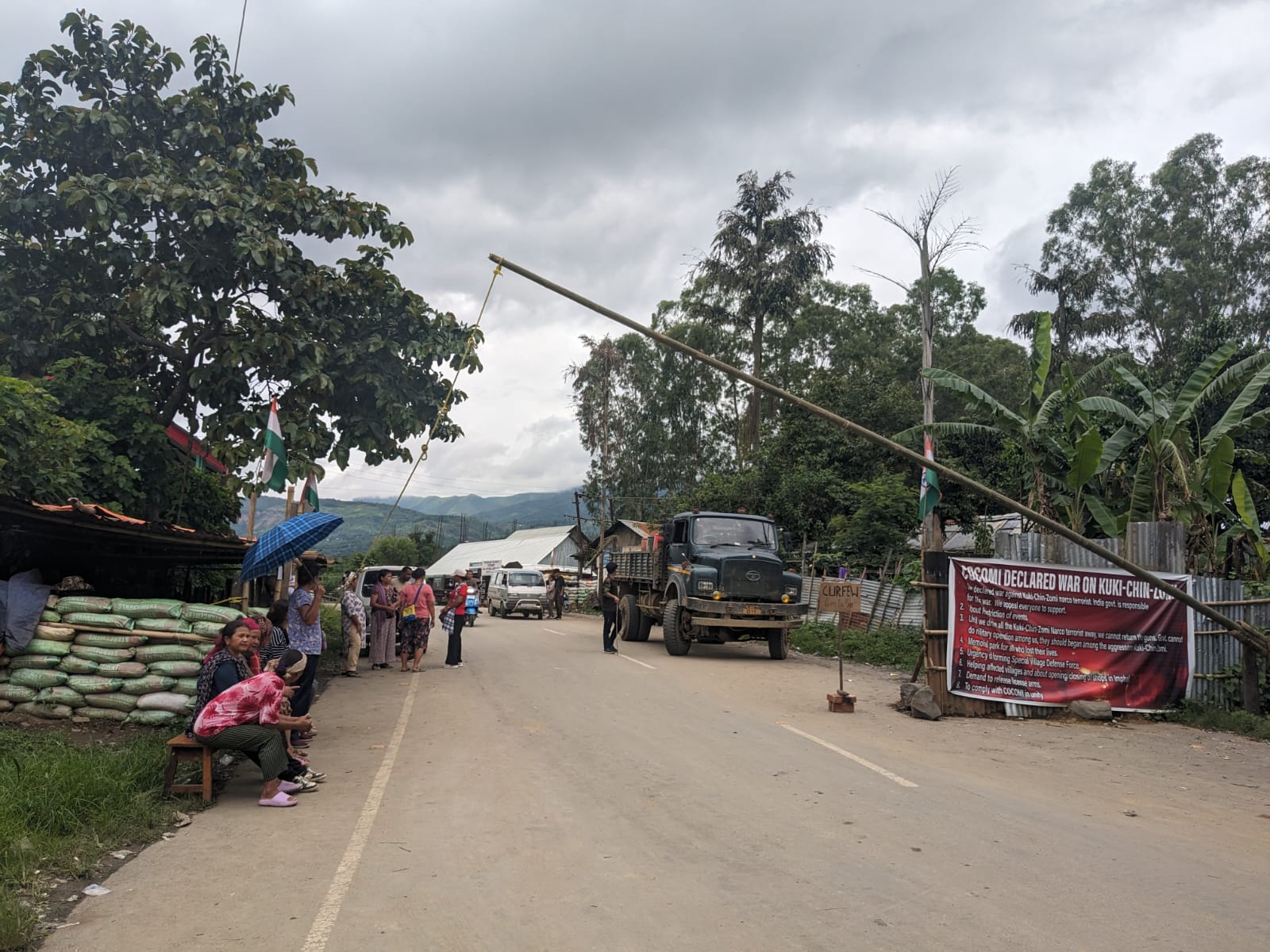
As reports of such brutal violence have spread, young people from both communities have started seeking out training in the use of firearms to better withstand attacks.
In Kadangband, located 18km from Imphal right at the point where the hills begin, 52-year-old retired constable N Bobby Singh is mobilising and training village youths, calling on recruits to “safeguard” their Singda village territory. He says that he has 96 men from the village’s 165 households training under him, rotating every day in three batches at 20-minute intervals.
“I teach them how to handle the weapon, when and how to fire when they see the enemy on the other side, the position they should take to avoid casualty,” he tells The Independent. “I had to teach them that everyone should not fire at one target, or not relentlessly shoot when the other side is not responding, for it will lead to waste of ammunition,” he says.

“The distance between our and their [Kuki] village is only 30 feet. It is one of the closest and the firing happens at any given time, during the day and the night,” says Singh, adding that the men in the village take turns in the bunker to hold the territory. “We have divided duties into age group. So those from 18 to 45, are on the frontline and those between 45 and 55 take patrolling duties.”
Sharing the details on the source of weaponry, he says the guns used by the locals are all licensed and that they have been sourcing them over the last six years. “We need it for self-defence. We have been buying them through a committee, where all the people interested in getting a weapon contribute about Rs 500 (£4.70) to Rs 800 on a monthly basis.”
The ex-serviceman, however, laments at the quality of weaponry and the shortage of ammunition. “We are primarily agrarian. So, not everyone has a stable source of income. It leaves us dependent on the contribution from those receiving pensions and having full-time jobs because farming and other businesses are shut down due to the conflict.”
Under chief minister, N Biren Singh, Manipur provided the highest number of gun licenses in the last seven years, when compared to the other state. While in December 2016, the state had 26,836 gun licence, it went up by 8,000 to 35,117 since N Biren Singh came to power in the state in March 2017, reported The Wire.
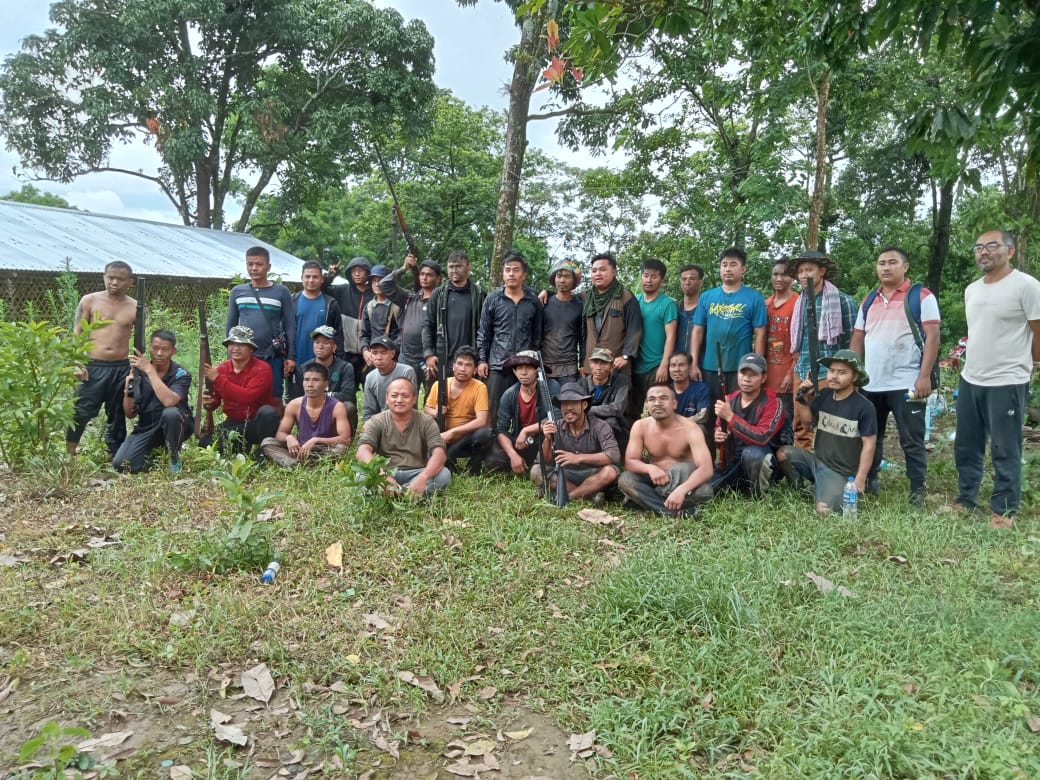
While, the weapons in Kadangband are claimed to have been bought from crowdsourced money, earlier on 28 May, more than 3,000 weapons were looted from police armouries in Imphal, prompting chief minister to appeal individuals to surrender their arms.
“I appeal to the Meitei people who are with arms not to attack anything and maintain peace and harmony so that we can resort to normalcy in the state of Manipur,” the chief minister belonging to prime minister Narendra Modi party had said in a statement in June.
According to East Mojo, this included medium machine guns and AK assault rifles, carbines, Insas light machine guns, Insas rifles, M-16 and MP5 rifles. Around 4,537 arms and thousands of rounds of ammunition were said to have been stolen.
The “frontline” bunkers in Kadangband are located less than 500m from the bunkers of the Indian armed force. The Independent saw at least three such sandbagged bunkers connected through a five feet deep trench that, Singh explains, is used for positioning his men.
“You see, we are at a relative disadvantage because the shelling comes from higher altitude,” he says, adding that the firing can come from different directions and that men in the bunker sometimes need backup.
Sandeep Singh, 47, who is on shift in the bunker says he learned to fire the gun only a month back. “I have not fired from the gun as yet. I am at times scared. Especially when there is movement of militants on the other side,” he says, referring to Kuki.
On being asked if he fears the thought of firing shots, he says: “This is my land. This my village. I have to protect it.”






Join our commenting forum
Join thought-provoking conversations, follow other Independent readers and see their replies
Comments